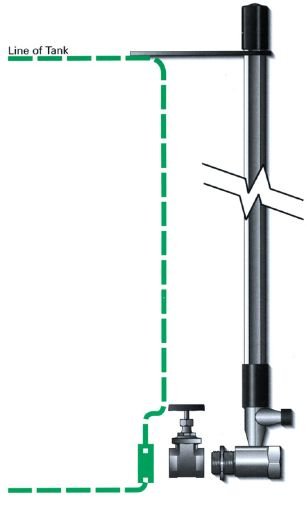You are using an out of date browser. It may not display this or other websites correctly.
You should upgrade or use an alternative browser.
You should upgrade or use an alternative browser.
Petcocks for sight gauge on fuel tanks
- Thread starter JDCAVE
- Start date
The friendliest place on the web for anyone who enjoys boating.
If you have answers, please help by responding to the unanswered posts.
If you have answers, please help by responding to the unanswered posts.
hollywood8118
Guru
- Joined
- Nov 16, 2009
- Messages
- 2,381
- Location
- USA
- Vessel Name
- " OTTER "
- Vessel Make
- Ocean Alexander Europa 40
I think Marin is correct that this is being way overthought.. the risk of the existing valve working its way open is next to 0.
Everything in the E.R. is combustible.. the small amount of fuel in that sight hose is small compared to the spare gallons of oil we all carry in our E.R.
The bigger risk is loose items that can cause damage in a seaway. Who would leave the valve open when checking fuel levels.. my hand never comes off the bottom valve.. open it for about 5 seconds then close it.. done deal.
My solution is to replace the tubing often so it does not get cloudy of brittle.. then I don't worry about the tubing fracturing and causing a leak.
Finally glass sight tubes even with protection have always scared me.. sometimes in foul weather our boats take a pounding and a 36" to 48" long glass tube isn't that strong.
Happy New Year,
HOLLYWOOD
Everything in the E.R. is combustible.. the small amount of fuel in that sight hose is small compared to the spare gallons of oil we all carry in our E.R.
The bigger risk is loose items that can cause damage in a seaway. Who would leave the valve open when checking fuel levels.. my hand never comes off the bottom valve.. open it for about 5 seconds then close it.. done deal.
My solution is to replace the tubing often so it does not get cloudy of brittle.. then I don't worry about the tubing fracturing and causing a leak.
Finally glass sight tubes even with protection have always scared me.. sometimes in foul weather our boats take a pounding and a 36" to 48" long glass tube isn't that strong.
Happy New Year,
HOLLYWOOD
psneeld
Guru
Attachments
AusCan
Guru
- Joined
- Jul 15, 2012
- Messages
- 3,218
- Location
- Australia
- Vessel Name
- Kokanee
- Vessel Make
- Cuddles 30 Pilot House Motor Sailer
I think Marin is correct that this is being way overthought..
HOLLYWOOD
+1
Agree - Don't get too worked up about it.
99.9% of valves have teflon or nitrile seals that will fail in a fire. Then there's the fuel lines themselves, and what about poly tanks?.
One other simple precaution you can take is to share one sight tube between the two tanks (fitted on the equalising line). It will reduce the risk of failure by 50%.
Similar threads
- Replies
- 3
- Views
- 213

